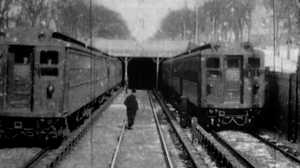The Ultimate Startup
The Boston Subway
The creation of the Boston subway system — the country’s first — is the subject of the new American Experience film, The Race Underground. It’s also one of our nation’s oldest startup success stories. To explore that angle, we turned to Scott Bailey, managing director of MassChallenge Boston.
MassChallenge is a non-profit startup accelerator that launched in 2009. Since then, they’ve graduated 1,211 startups and seen first-hand the incredible amount of entrepreneurial effort and community support it takes for startups to succeed. When we spoke with Bailey, he identified five key ways that the Boston subway system exemplifies the successful startup.
Risk
Like many entrepreneurs, Sprague took a huge risk jumping into the unknown. He gave up the security of a dream job — working under Thomas Edison to develop central power stations — to venture out on his own and build the electric motors that would one day power railways.
Investing in a subway system was also risky leap of faith for the public. People were afraid of the safety hazards involved with running electric currents underground — and the evil spirits that lurked there.
Corporate Investment
One way to minimize risk is to partner with powerful and more established transit companies. Sprague did just that.
First, he built a prototype of the rail system for the Richmond Union Passenger Railway in Virginia. Then, in Boston, he worked with the West End Street Railway to create the nation’s first underground system. Later, Edison General Electric Company acquired Sprague Motors, providing the capital it needed to survive.
The value of startup and corporate collaboration is still something we’re seeing today — especially at early stages.
Political Buy-In
Beyond private investment in the Boston subway, there was support from key players across the ecosystem, including influential policy makers.
With buy-in from Boston Mayor Nathan Matthews, construction of the subway was greenlit, and the technology became the solution to Boston’s horrific congestion. It also became an example for cities around the world.
Failure
Even with corporate buy in and political support, there were still plenty of failures for both Frank Sprague and the investors in the subway project.
Motor malfunctions, explosions, public backlash, uncertain revenue sources — the complex subway system you recognize today certainly didn’t happen overnight. It took years of hard work and perseverance. Sprague and his team had to believe in their vision even when it seemed like everyone and everything was working against it.
Sustainable Success
Ultimately, the first subway was a huge success; not only did it transform the entire transportation sector, it also set the stage for long-term, sustainable impact.
It connected communities to city centers. It created jobs during construction, and after it opened to the public. It also spurred economic growth for the region, as efficient transportation proved very attractive to new businesses.








